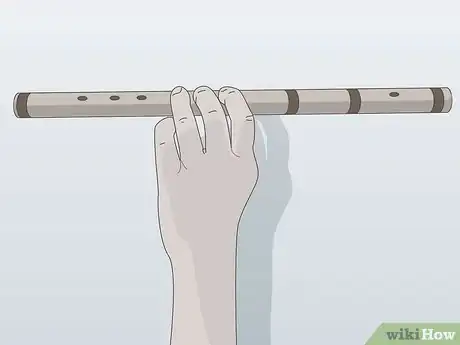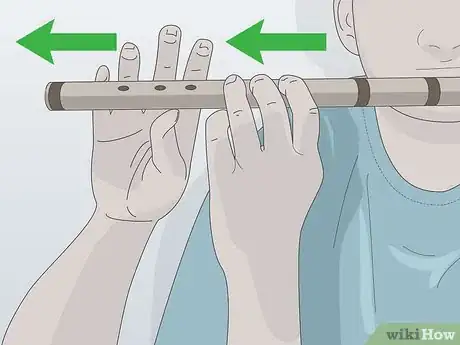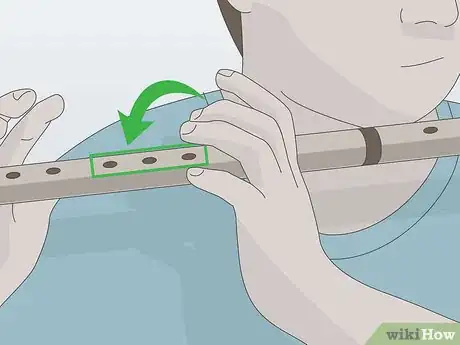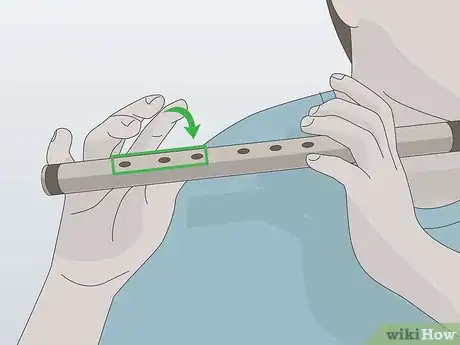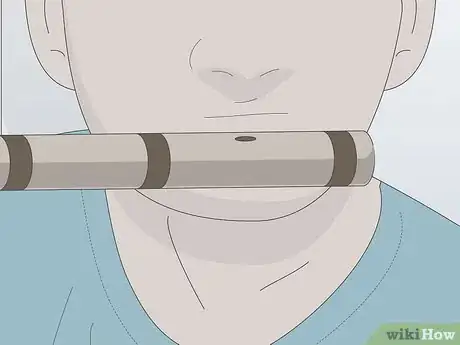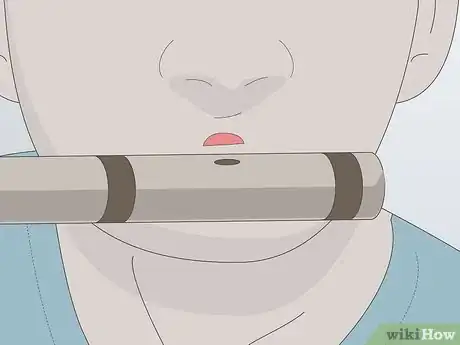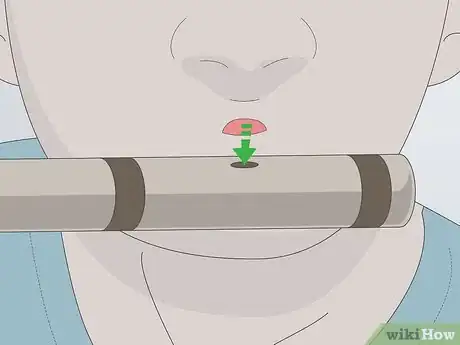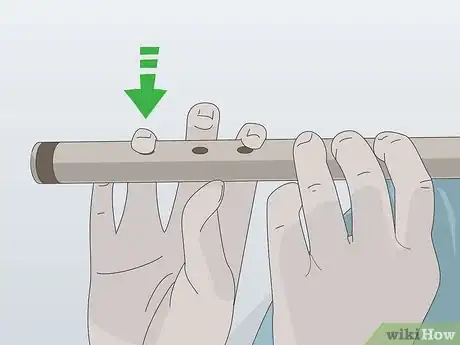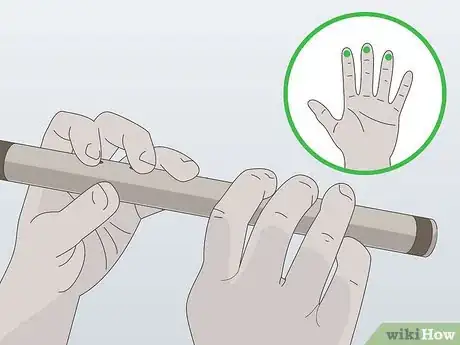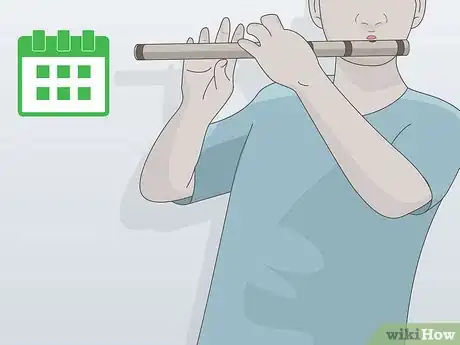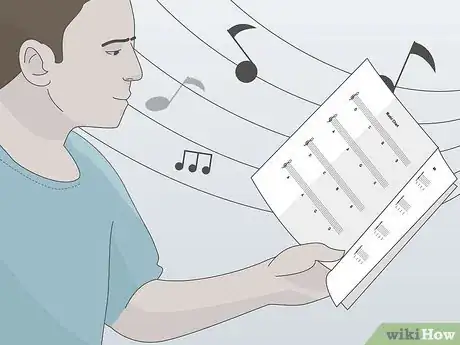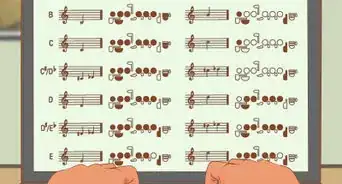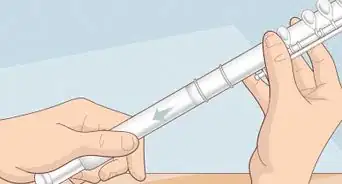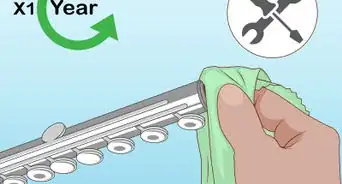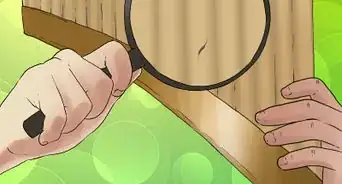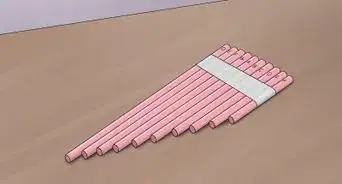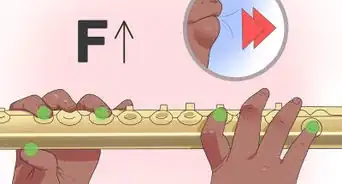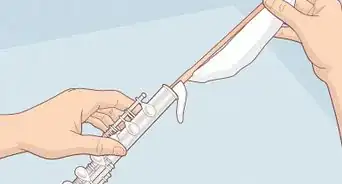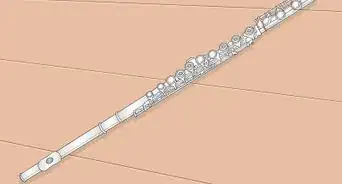This article was co-authored by wikiHow Staff. Our trained team of editors and researchers validate articles for accuracy and comprehensiveness. wikiHow's Content Management Team carefully monitors the work from our editorial staff to ensure that each article is backed by trusted research and meets our high quality standards.
There are 9 references cited in this article, which can be found at the bottom of the page.
wikiHow marks an article as reader-approved once it receives enough positive feedback. In this case, 86% of readers who voted found the article helpful, earning it our reader-approved status.
This article has been viewed 86,462 times.
Learn more...
The bamboo flute is a beautiful instrument made out of a single piece of bamboo, and it’s most widely known as an instrument of Chinese music. The music played on bamboo flutes is often called ethereal, calming, and peaceful. With practice, you can learn how to hold yourself and the flute properly and how to produce beautiful sounds. Set aside some time to practice every day, and before you know it you will be able to mete out your breath and play scales proficiently.
Steps
Getting in Position
-
1Hold the flute so it is parallel to the ground. Bamboo flutes are played horizontally rather than vertically, in a very similar style to the Western concert flute. Keep your elbows out to your sides rather than pinching them close to your body, and try to not hunch your shoulders. A loose, relaxed form is going to help you produce the best sound.[1]
- It sometimes helps to do this in front of a mirror so you can see what your body looks like, rather than just relying on feel.
-
2Position the flute so that the finger holes extend out to your right. The blowing hole will be the left-most hole. Bamboo flutes have either 7 or 8 holes: 1 is the blowing hole, and 6 of them are finger holes, which are used to create different sounds. If there is the 8th hole, it will be positioned between the blowing hole and the finger holes, and you’ll never cover it up while playing. There will be a flexible membrane covering this hole that helps create dynamic, unique sounds specific to the bamboo flute.[2]
- If you ever hear a strange buzzing sound coming from your flute, chances are the membrane covering this hole has come loose and needs to be tightened.
Advertisement -
3Place your left hand on the outside so your fingers curl inward. Position your left hand so that its palm is pointing toward your face. You’ll use your index finger, middle finger, and ring finger to respectively cover the 1st, 2nd, and 3rd, finger holes.[3]
- In general, the pinky fingers are not used to play the flute. If you’re missing one of your other fingers, though, you can substitute your pinky in its place.
-
4Put your right hand on the inside so your fingers extend outward. Your right palm should face away from your body. You’ll use your index finger, middle finger, and ring finger to cover the 4th, 5th, and 6th holes, respectively. Take note that the 5th and 6th holes are sometimes a bit further apart and you may need to practice stretching your middle and ring fingers away from each other.[4]
- Use your thumbs to support the weight of the flute and keep it in the correct position.
-
5Stand straight with your shoulders held back to allow the best airflow. Practice good posture to breathe deeply from your stomach, which will help produce the best sound from your flute. If you are sitting, keep your feet flat against the ground and your thighs parallel to the floor. If you’re standing, keep your legs about shoulder-width apart, and bend your knees very slightly so that you don’t cut off the blood flow to your legs.[5]
- Your head will tilt toward the blowing hole slightly, but aim to keep your neck, shoulders, and spine as straight as possible.
Making Music
-
1Position the blowing hole below your bottom lip so that it’s centered. Avoid putting the hole up to your lips. Instead, place the flute so that the hole is perpendicular to your bottom lip. When you blow, you’ll blow downward rather than straight out in front of you.[6]
- You’ll be blowing a lot of air while practicing the flute—make sure to give your lips some extra TLC with an exfoliating lip scrub and moisturizing chapstick application after you finish each session.
-
2Make a small opening and blow air down toward the hole. At this stage, keep all of the finger holes uncovered: the main goal is to produce a clear, ringing sound. Start by directing the air toward the top edge of the hole and slightly adjust the power of the airstream and where you’re directing it until you accomplish playing a note.[7]
- Keep in mind that you don’t need to blow very forcefully to produce sound.
- Have you ever blown air into a glass bottle to make a ringing sound? If so, what you’re doing to the flute is very similar to what you did when you “played” the bottle.
-
3Breathe in deeply through your belly to prepare to blow into the flute. Think of your lungs like a jar, and you have to fill that jar starting at the bottom. So take a deep breath from your stomach, and let it expand outwards with air. Once your belly is full, fill your chest and ribcage with air, and then move to your shoulders.[8]
- Practice breathing in deeply for 5 seconds, following the belly-chest-ribcage-shoulders method. Be mindful as you breathe and pay attention to how your body feels in these moments. This is what you’ll try to recreate every time you refill your lungs with air while you play.
-
4Control the exhale of your breath and mete it out to multiple notes. You don’t need a new breath of air for each note you play (you might at the beginning as you’re learning the feel of things, but once you can play notes, one breath should last you for an entire stanza or phrase of music). It doesn’t take a ton of force to produce a sound, so only use the minimum amount of breath needed for each note so each breath powers more music.[9]
- Practice exhaling very slowly with your lips pursed to mimic the shape they make when you’re playing the flute. Breathing exercises are great ways you can “practice” playing the flute, even when you don’t have your flute with you.
-
5Practice covering one finger hole at a time to play new notes. This can take some time to master, so don’t be worried or upset if it takes you several sessions to master creating sound from each successive finger hole. After you’ve attained make a note with none of the finger holes covered, go ahead and cover the very 1st hole with the index finger on your left hand. Master making a sound on that hole, and then add the middle finger on your left hand to the 2nd hole, and continue on until all 6 holes are covered.[10]
- Each hole may require a slightly different force of air or adjustment to where you blowing into the hole. Make small, incremental changes to figure out what you need to do.
-
6Cover each hole with the pad of your finger, not just the tip. A key part of playing the bamboo flute correctly is making sure the finger holes are completely covered. If any air leaks out, it can really affect the sound of the flute and can make your music sound, well, not very musical. When you place a finger on any given finger hole, use the entire pad of your finger and place it down directly on top of the hole. Avoid sliding your finger into place or trying to just use the tip of your finger. It may take a lot of practice to make this a habit, but you’ll be a better musician for it.[11]
- On the 6th hole, it’s common for your finger to slip off of the 5th hole, causing an air leak. Take care when playing the 6th hole to keep your other fingers firmly in place.[12]
- If you have very small fingers, you may want to look into getting a smaller bamboo flute—there are ones made specifically for people with smaller hands that might make the process easier and more enjoyable for you.
-
7Rehearse every day until you’re able to play scales without pausing. Gaining finger mobility and learning how to maintain a continuous stream of air are integral to becoming a proficient flute player. Make time to practice every single day, even if it’s only for 15 minutes at a time.[13]
- If you’re interested in or able to, consider taking private lessons. They’re definitely not required and you can self-teach yourself to play the bamboo flute, but a professional instructor might be able to give you some great info about overcoming any hurdles you face.
-
8Learn how to read music to play specific notes and songs. Once you’ve become more comfortable with producing sound from your bamboo flute, it’s time to take that knowledge and start making music. There are lots of fingering charts online that you can memorize and practice to become proficient at reading and playing music. You could also look up videos and memorize the finger placements and pacing for specific songs you want to play.[14]
- Check out https://www.sideblown.com/Finger.html for a visual of bamboo flute fingering charts to help you get started on learning your notes.
Community Q&A
Did you know you can get answers researched by wikiHow Staff?
Unlock staff-researched answers by supporting wikiHow
-
QuestionHow does a bamboo flute work?
 wikiHow Staff EditorThis answer was written by one of our trained team of researchers who validated it for accuracy and comprehensiveness.
wikiHow Staff EditorThis answer was written by one of our trained team of researchers who validated it for accuracy and comprehensiveness.
Staff Answer wikiHow Staff EditorStaff Answer
wikiHow Staff EditorStaff Answer -
QuestionHow long does it take to learn the flute?
 wikiHow Staff EditorThis answer was written by one of our trained team of researchers who validated it for accuracy and comprehensiveness.
wikiHow Staff EditorThis answer was written by one of our trained team of researchers who validated it for accuracy and comprehensiveness.
Staff Answer wikiHow Staff EditorStaff Answer
wikiHow Staff EditorStaff Answer -
QuestionHow much does a bamboo flute cost?
 wikiHow Staff EditorThis answer was written by one of our trained team of researchers who validated it for accuracy and comprehensiveness.
wikiHow Staff EditorThis answer was written by one of our trained team of researchers who validated it for accuracy and comprehensiveness.
Staff Answer wikiHow Staff EditorStaff Answer
wikiHow Staff EditorStaff Answer
References
- ↑ http://www.goamcan.com/imports/How-to-play-dizi.html
- ↑ https://billymiller.wordpress.com/how-to-play/
- ↑ https://billymiller.wordpress.com/how-to-play/
- ↑ https://billymiller.wordpress.com/how-to-play/
- ↑ https://billymiller.wordpress.com/how-to-play/
- ↑ https://youtu.be/VJLAY9E-Bng?t=24
- ↑ http://www.goamcan.com/imports/How-to-play-dizi.html
- ↑ https://youtu.be/RUCWLqUapVI?t=87
- ↑ https://youtu.be/RUCWLqUapVI?t=208
